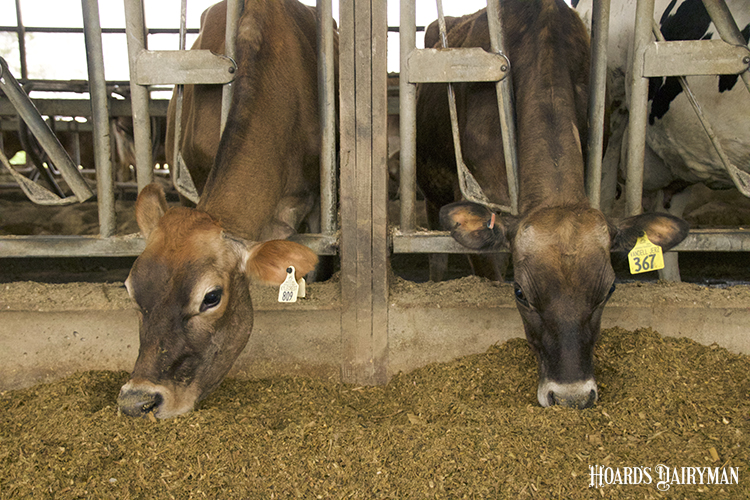
As we approach the holiday season, my children are filling out their Christmas lists and looking forward to ripping open presents from Santa to uncover new toys, clothes, books, and more. Similar to ripping open the presents found under the tree and learning what is in the gift box, we’re beginning to open up 2021 corn silage and grain for our dairy herds. As we open those storage units, we’re beginning to gain a better understanding of what’s been stored under the plastic or in those bins.
Over the past few weeks, I’ve been discussing 2021 silage quality extensively. Quality is defined by fiber and starch content, and the respective nutrient digestibilities of each. Conversely, there is an antinutritional aspect to forage which can rob cows of the nutritional quality the silage may have on paper. Namely, the feed hygiene factors that contribute to antinutritional characteristics can be classified into fungal, mycotoxin, or bacterial contaminants. The focal point here will tie into the fungal and mycotoxin contaminants present in this year's silage, as many have been asking about what this year’s silage is looking like.
With silage quality, I can typically get a fairly solid understanding of the new crop within a few weeks of harvest. However, with feed hygiene and antinutritional factors, it takes a couple of months longer to accumulate the database and summary. Now we’re settling in now with enough corn silage and grain results to make a broad assessment regarding the crops' antinutritional quality. In general, the 2021 silage and grain cleanliness looks pretty good across the U.S.! However, there are several notable trends showing up which we’ll highlight here.
Fungal measures - mold and yeast
Mold counts in corn silage and corn grain are flat for the Midwest and West, however counts are up slightly in the Eastern U.S. Trending with mold, yeast counts also appear up slightly for those farming in the Eastern U.S. Reflecting upon the growing and harvest season, we’ve had substantially more rainfall, coupled with adequate heat for the Eastern U.S., and fungal growth tends to increase under wetter growing conditions.

If you suspect your herd may be suffering from wild spoilage yeast contamination, a good spot to start is checking your silage and TMR temperature. Wild yeast growth elevates the feed’s temperature. A laboratory analysis can also confirm an issue.
Bear in mind that live cell probiotic yeast that your nutritionist includes in your diet are good, while spoilage yeast is bad. If you have substantial yeast contamination, try, and control the source first but consider research backed probiotics as a band-aid if needed.
Mycotoxins command attention
While mold and yeast can negatively affect rumen metabolism, mycotoxin contamination tends to be more buzz worthy in discussions about feed contaminants. To home in on mycotoxin contamination, I recommend starting with at least checking Vomitoxin and T2-Toxin. At one time I recommended starting with Vomitoxin as a marker of mycotoxin contamination. However, Damon Smith has taught me that Vomitoxin is not necessarily a great marker for all other mycotoxins.
The Vomitoxin levels for the Eastern U.S. may be trending up, however appear at similar levels to the 2020 corn silage and grain crop. The same can be said for the Midwest, as detailed in the two graphics below. Checking in on T2-toxin, we’re not seeing much in concern at this point thus the graphs are not shown.


Recapping this article, I’m happy to report that this year’s crop does not appear to be a substantial risk for the U.S. as a whole for dairy cow health and performance, due to fungal or bacterial contaminants. Wild yeast presence in corn silage is a rising challenge for those of us farming in more humid conditions, so we may need to be more aggressive with our aerobic stability management tools. In the Eastern U.S., the issue seems to be a bit more prevalent this year.
While mycotoxin contamination does not appear to be a sizable issue for all, recognize the ranges to the data shown in these graphics. Consider that there could be concern levels in your regions and don’t just assume all is well. Lastly, bring in your nutritionist and allied industry experts for guidance if you’ve got questions about your feeds’ cleanliness this year as we have better feed hygiene assessment tools than ever heading into 2022. Next year’s margin potential is looking strong, so work to capture every bit of margin your farm can and leave nothing on the table.








